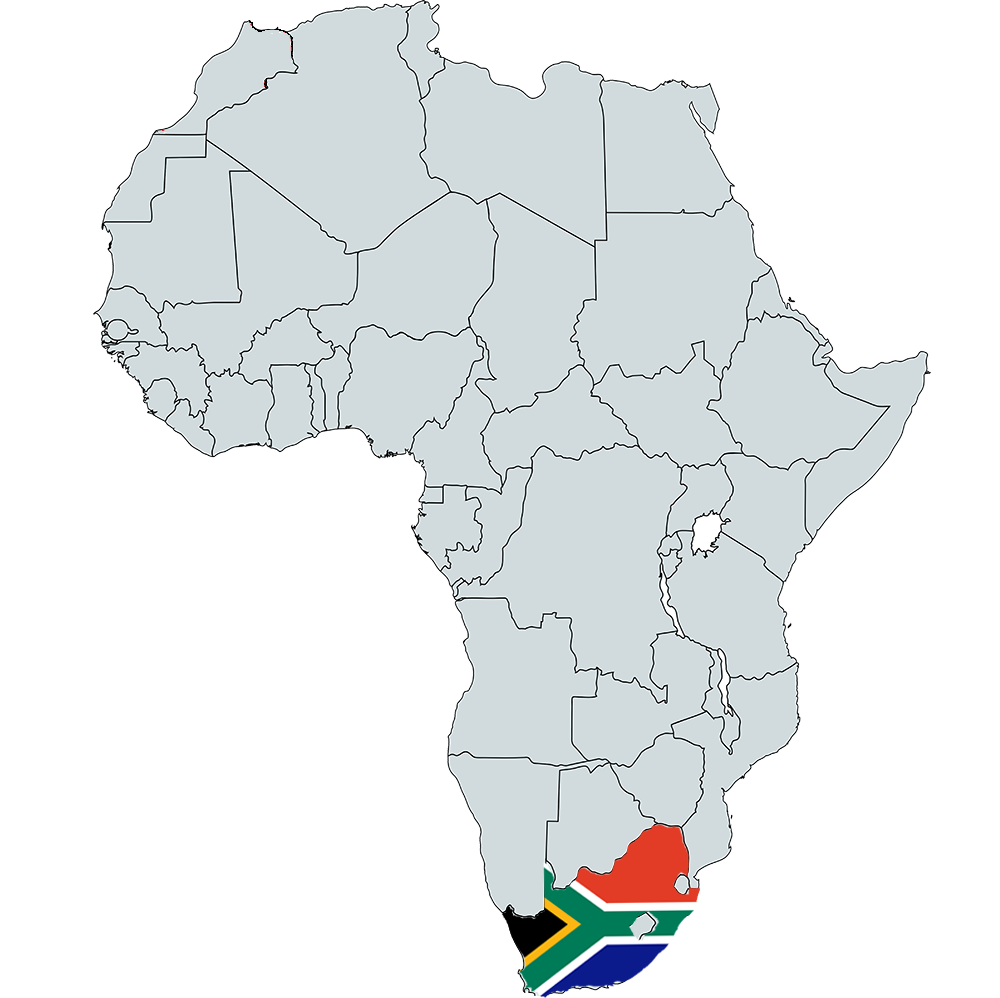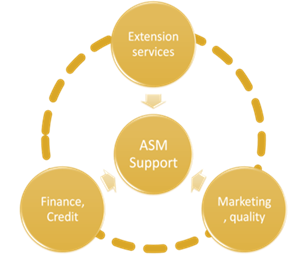
South Africa ASM Profile Political Economy & Strategic Standpoints | Social and Environmental Factors | Local linkages | ASM Sites in The Republic of South Africa
Mining is an important part of South Africa’s economy, for many years the sector has been the country’s development driver. South Africa has a long history of mining, both on a small scale and large scale. Artisanal and small-scale mining (ASM) in South Africa received official recognition after the change in government in 1994. However, ASM is yet to realise its full potential. Small-scale miners are still faced with a number of challenges relating to access to mineral rights, access to markets, access to capital, inadequate skills and knowledge, access to information, access to appropriate technology, and lack of institutional support.
The sector employs nearly 30 000 illegal and legal men, women and children. “Zama-Zama” is the local term used to refer to artisanal miners however they have more equipment, technical skills than typical artisanal miners. “Zama-Zama” tends to be associated with high value minerals such as gold or diamonds. ASM accounts for nearly 10% of the national gold production. However due to the activity’s illegal or at best extra-legal nature, by law the activity is banned. Gold amounting to as much as R7bn a year is smuggled out of the country to buyers in neighboring countries. The past few years have seen an increase in the participation in mining of women and people from non-white race groups and this is mostly thanks to the growth in ASM activities. According to the Chamber of Mines, 'illegal artisanal mining is on the rise in South Africa and presents challenges that need to be addressed from a range of perspectives'.
ASM activities are located in the gold and green stone belts, diamond artisanal mining is found in Northern Cape and North West provinces. Coal artisanal mining is found in KwaZulu Natal and Eastern Cape. The social, environmental and economic impact of ASM in South Africa is clear, however the illegal mining in particular makes the activity less manageable. Mining has led to an Influx of undocumented immigrants, a substantial figure of arrested illegal miners are undocumented immigrants.
Country Mining Vision Status
CMV Processes Underway.
Policies, Laws and Regulations Currently in Effect
Mineral and Petroleum Resources Development Act 2002, Act 28 of 2002
Precious Metals Act, 2005
Diamonds Second Amendment Act, 2005
National Small Business Act of 2003
Mine Health and Safety Act, 1996 (Act No. 29 of 1996)
ASM Associations or Cooperatives
NONE
ASM Definition Criterion
Number of employees; Assets; Annual revenue; level of mechanization
ASM Licensing
Artisanal: YES
Small Scale Mining: YES
ASM Minerals or Metals Exploited
Precious MetalsGold, Platinum, Palladium
Base Metals Iron ore, Zirconium, Vanadium, Chrome
Minerals Coal, Uranium, Manganese, Vermiculite, Ilmenite, Rutile
Precious Stones Diamonds
Development MineralsRare earths
ASM SUPPORT TRIANGLE

Mining Code Provisions for Women in ASM
Mineral and Petroleum Resources Development Act 2002; Chapter 2, Fundamental Principles (d) substantially and meaningfully expand opportunities for historically disadvantaged persons, including women, to enter the mineral and petroleum industries and to benefit from the exploitation of the nation’s mineral and petroleum resources.
Mineral Policy of South Africa
Issues: Lack of investment attractiveness due to eroded business and investor confidence
Policy Objectives:The primary objectives are to promote equitable access to the nation's mineral resources to all people of South Africa; to substantially and meaningfully expand opportunities for HDSA's to enter the mining and minerals industry and to benefit from the exploitation of the nation’s mineral resource; to promote employment and advance the social and economic welfare of mine communities.
Policy provisions:
I. One of the implementation targets include, optimisation of social and economic benefits from mining, the effective long term management of environmental, social and health impacts (including dealing with the legacy of old mining sites), the extension of participation in mining;
II. The strengthening of governance and institutions;
III. Effective beneficiation and ongoing research and technological innovation.
Mining Policy Environment:
ASM is not legally recognized but it was among the key socio-economic programmes identified in the Reconstruction and Development Programme (RDP) - a policy framework aimed at eradicating past injustices created by the apartheid government. In South Africa there is a clear distinction between ASM and illegal mining. The mining industry is regulated by numerous statutes. Legislation also prohibits the holding/ trading without a permit of certain metals in an unwrought state.
The Mineral and Petroleum Resources Development offers no guidance on the definition of ASM even though it is defined in the mining policy. The Sustainability Development through Mining programme has given rise to initiatives vital to enhancing the sustainability of mining in South Africa. The mining industry has adopted a zero harm policy and wellness of employees as a top priority. Other noteworthy initiatives include: the South African Cyanide Guideline for Gold Mining.
Finance and credit
Small-scale miners are usually funded through three channels: government initiatives, donor organizations, and/or middlemen. Government has also established initiatives to provide funding for both aspirant and existing miners. In 2000, the Department of Mineral Resources (DMR) established the National Steering Committee of Service Providers (NSC) as part of the National Small Scale Development Framework. The funding was meant to be used to purchase equipment, provide rehabilitation guarantees, and cover operational costs. While these programmes were able to assist some small-scale mining projects to become viable, overall results are not visible. The DMR has since stopped providing funding to small-scale miners.
Extension services - a phased approach to integration and capacity-building
Mintek’s Small-Scale Mining and Beneficiation Division (SSMB) has established a training school that will give Artisanal and Small-Scale Miners an outcome-based theoretical and practical training. Over 2 500 people have already trained under the programme. The SSMB Division also assists aspiring and established Small-Scale Miners to formalize. In addition, the division offers a course on beneficiation (the adding of value to concentrates, industrial minerals and waste products). The Kgabane Jewellery Programme was also created to encourage the development of the indigenous precious metal jewellery sub-sector.
Marketing and quality
Access to markets is a major challenge for the miners. In addition, the majority of operations lack essential marketing skills and knowledge needed to identify and compete in major markets. Therefore, most operations rely of word-of-mouth advertising and referrals as the only means of marketing.

